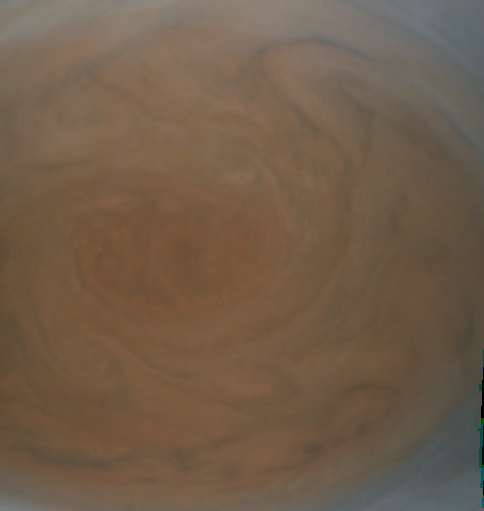Published July 13, 2017, from the notebooks of Jason Jarvis.
Our discussion of gravity and mass momentum of Jupiter has included Jupiter's composition, gravity, its rocky and icy moons, and the introduction of Body N. This astrophysical brief focuses on Jupiter's great red spot. How can this storm be visible and apparent for so long in Jupiter's upper atmosphere?
Please see Unlocking Jupiter, gravity, and more discussion on mass momentum, continued analysis - Jupiter and Regarding Gravity, Mass Momentum, Jupiter, the Origin of Earth as a Body N, explanation of gravity for previous discussion including the introduction of Body N.
The great red spot of Jupiter is often times referred to as a storm similar to a hurricane here on Earth. However this storm and the great read spot have been visible on Jupiter for hundreds of years. The spot is observed and apparent just below the equator in Jupiter's Southern hemisphere. The size of this spot has decreased over the years however is larger than the planet Earth.
The Great Red Spot is seen to orbit about Jupiter at roughly the speed planet rotates while spinning in the upper jet streams. As you can see from the pressure and thermo flow compositions of Jupiter that eddys and swirls are possible. Specifically when you see the separation lines in Jupiter's upper Jet Streams.
As you can see from the signifiant size of pressure differences and fast thermo fluid flows in Jupiter's upper atmosphere a significant Body N would cause a funnel cloud with tight enough spin to reach the outer atmosphere.
While Body N is persistently being driven by the atmosphere around it, Body N is large enough and close enough to the upper equatorial atmosphere to maintain a steady and persistent vortex in its wake.
This spiraling vortex presents itself as the great read spot of Jupiter.

As we have discussed earlier as Body N through bouyant forces is circling in Jupiter's atmosphere the winds are persitently passing and streaming by. Much like a rapid in a river that is passing over a stationary rock, this creates a very large and heated turbulent flow. Due to the steady and persistent flow a swirling vortext presents itself.
As you can see from the Body N illustration below a swirling vortex presents itself in the upper atmosphere as the Great Red Spot.

